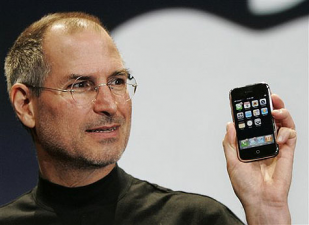In the past, major software manufacturers had not been particularly known for their environmentally friendly track records. Firms such as Apple and Samsung have drawn attention from the public due to their sheer size, the availability of their phones through portals such as Broadband Choices and the probability that nearly everyone has used one or more of these devices in the past. So, have either of these companies taken on a “greener” approach in regards to their environmental policies? Let’s take a closer look.
The Changing Attitude of Apple
In the past, Apple was heavily criticised for its lack of acumen when it came to the environment. This company was particularly notorious for the amount of coal it utilised to power its servers as well as negative environmental impacts within China and Indonesia. These and other actions sparked obvious complaints from organisations such as Greenpeace. To the credit of Apple, some very real changes have occurred since this time.
For example, the company eliminated the use of arsenic and PVC within its smartphone displays as far back as 2008. Another notable improvement surrounds their use of fossil fuels. Apple began working in conjunction with a Chinese renewable energy firm with an intention to transform their energy usage so that its data centres would employ green sources of power. Although some of these actions can be attributed to the influence of Steve Jobs, many believe that corporate policies override any single individual.
Samsung: Environmentally Friendly or Not?
We should not at all be surprised that Samsung has likewise received its fair share of criticism. This is due in no small part that the company is the current global leader in terms of smartphone shipments. After having faced accusations of poor environmental policies and (much like Apple) a reliance upon coal, Samsung has sought to make some real changes since the middle half of the 2000s.
Samsung has been a member of the Energy Star conservation scheme for some time and its developers claim that the majority of their products now stand up to these rigid governmental guidelines. While this tends to apply to their selection of household appliances, there has also been some positive progress in relation to their line of smartphones.
One interesting example is the Samsung Galaxy S6. Not only has the company removed many of the harmful chemicals associated with older production models, but they have gone entirely “green” in regards to shipping methods. All containers are manufactured from recycled materials and even the labels themselves are printed with biodegradable soy ink as opposed to petroleum-based products. Their Samsung Galaxy chargers are made from recycled plastic and these power units themselves are designed to offer a longer lifespan between charges. This can help to lower the consumption of mains electricity over time.
Should We Judge Books by Their Covers?
There is no doubt that both of these firms have changed their policies in order to adapt to environmental regulations. Still, let’s keep in mind that big business is big business. Many of the rare-earth metals required to power the modern smartphone are extracted from the earth using extremely damaging techniques. Older phones are often discarded without following the proper guidelines. As these firms continue to expand, it is likely that their environmental impact will be felt around the world.
The main takeaway point is that both of these companies will have to strike a careful balance between continuing to satisfy the needs of their customers while simultaneously adhering to increasingly rigid environmental guidelines. And watch out for SnapChat Spy!







2 thoughts on “Apple vs Samsung: who does more (if anything) to help the environment?”
Comments are closed.